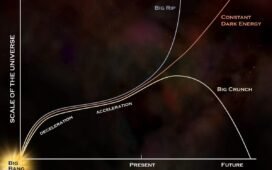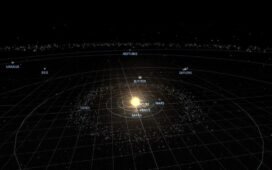Here in our Universe, both normal and dark matter can be measured astrophysically. But only normal matter can collapse. Why is that?
Here in our Universe, it may be the normal matter that we can directly detect, measure, manipulate, experiment with, and observe, but it’s the dark matter that represents most of the mass in the Universe. Whereas all the “stuff” that the planets, stars, gas, plasma, and dust are composed of represents about 4.9% of the total energy in the Universe, the mysterious dark matter — whose nature is unknown but for which the observational astrophysical evidence is overwhelming — makes up a whopping 27% of the cosmic energy budget. Only dark energy, making up 68% of the Universe, is more important from an energy density perspective.
And yet, dark matter is only ever found in diffuse halos, never in collapsed clumps like normal matter. Why is that? That’s the subject of this week’s question, coming all the way from Barry Lewis in New Zealand, who wants to know:
“How does dark matter, while being gravitational, not collapse? I can’t think of any discussion I’ve come across that addresses this apparent need for it to experience some sort of mutual repulsive force.”















